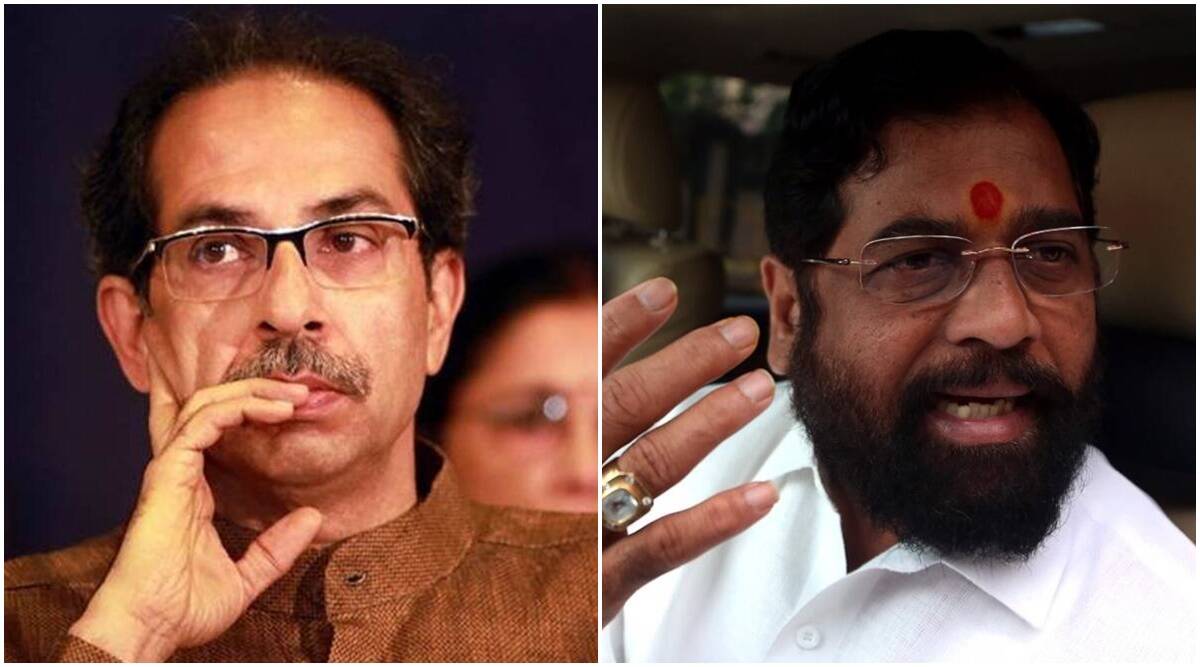 A split in a political party is not a new phenomenon. There have been several cases in the past, with both factions seeking recognition as the real party. (File Photo)
A split in a political party is not a new phenomenon. There have been several cases in the past, with both factions seeking recognition as the real party. (File Photo)On September 27, a five-judge Constitution bench of the Supreme Court, headed by Justice D Y Chandrachud, allowed the Election Commission of India to decide on Maharashtra chief minister Eknath Shinde’s petition staking claim over the “real” Shiv Sena and the party symbol of bow and arrow. This was a reversal of its earlier order restraining the poll body from adjudicating on the matter on a plea by Uddhav Thackeray.
The lawyers of the Thackeray camp had argued against the EC’s involvement by citing that disputes around the disqualification of MLAs and the validity of Shinde’s takeover are pending in the court. The Shinde faction responded by saying that proceedings under the 10th Schedule had nothing to do with the current dispute before the ECI. Amidst these calls and arguments ensuing from the rival parties and legal counsels, I have been flooded with media queries about the role of the Election Commission.
It is important to note that the EC does not jump into such cases by taking suo motu cognisance, and comes into the picture only when a party approaches it with its claim. The Commission then starts proceedings under Section 15 of the Election Symbols (Reservation and Allotment) Order, 1968 which are quasi-judicial in nature. It goes by the “Rule of Majority and Numerical Strength”, starting with a notice to the other faction to give its version. Both parties are asked to produce evidence in support of their claim, accompanied by affidavits.
It will be useful to see what Section 15 of the Symbols Order lays down: “When the Commission is satisfied on information in its possession, that there are rival sections or groups of a recognised political party, each of whom claims to be that party, the Commission may, after taking into account all the available facts and circumstances of the case … decide that one such rival section or group… is that recognised party, and the decision of the Commission shall be binding and on all such rivals sections or groups.”
The EC examines the claims and counterclaims of the two factions to determine which one has the majority. This includes MPs, MLAs, MLCs on the one hand, and the office-bearers of the party, on the other. Both factions often question and contest the supporters’ list of the other faction as inflated, containing many bogus signatures. Determining the genuineness of signatures is time-consuming and often a frustrating job. Since lawyers are involved, the whole process can normally take four to five months.
In the very first judicial test of the Symbols Order, a three-judge Supreme Court Bench of Justices H R Khanna, K S Hegde and A N Grover clarified the purpose of Paragraph 15 in these words: “The symbol is not a property to be divided between co-owners. The allotment of a symbol to the candidates set up by a political party is a legal right. And in case of a split, the Commission has been authorised to determine which of the rival groups or sections is the party entitled to the symbol. The Commission, in resolving this dispute, does not decide as to which group represents the party, but which group is that party.” The court upheld the constitutionality of the “test of majority” in the Congress split case (Sadiq Ali v. Election Commission of India, 1971). This principle has been repeatedly upheld by several subsequent judgments.
A split in a political party is not a new phenomenon. There have been several cases in the past, with both factions seeking recognition as the real party. The most important case which became the benchmark is that of the Indian National Congress, mentioned above, which split in 1969 leading to the formation of two parties — Congress (O) and Congress (I). Subsequently, Congress split a second time in 1978 when Congress (Indira) and Congress (Urs) were created. In the 1980s, in Tamil Nadu, AIADMK split into two factions, one led by MGR’s wife Janaki and the other by J Jayalalithaa. Later, the Janata Dal went through a similar process, becoming JD (U) and JD (S). In 2012, we had a similar situation in Uttarakhand where the Uttarakhand Kranti Dal split and, in UP in 2017, where the Samajwadi Party split just before the elections.
In all these cases, the EC went through the above-mentioned process. The EC looks at the strength of each group, in the party’s organisation and in the legislatures, applying the test of majority.
The Supreme Court has, time and again, upheld the test of majority in the Symbols Order to be a “valuable and relevant test” to decide a dispute between rival groups within a “democratic organisation” like a recognised political party.
But what happens if the elections are scheduled before the Election Commission is able to decide? In such situations, the name of the party and the symbol both are frozen and the two factions are given a temporary name like Party A and Party B, and symbol A and symbol B. When EC finally decides in favour of a faction, the other faction is allowed to register itself as a new party with a new symbol.
As for the current scenario, it remains to be seen how the case proceeds and what political and constitutional resolution it will lead us toward. Till then, an ad hoc arrangement for giving distinguishable names to the two factions and ad hoc symbols to each seems to be the likely scenario.
The writer is former Chief Election Commissioner of India and author of An Undocumented Wonder — The Making of the Great Indian Election